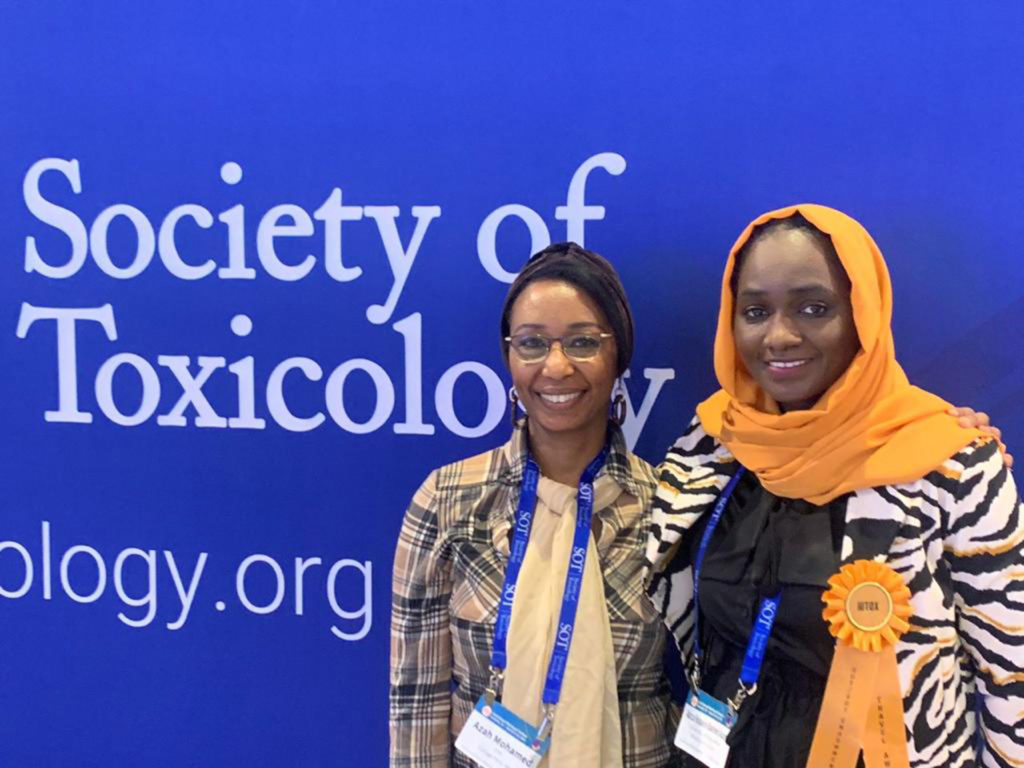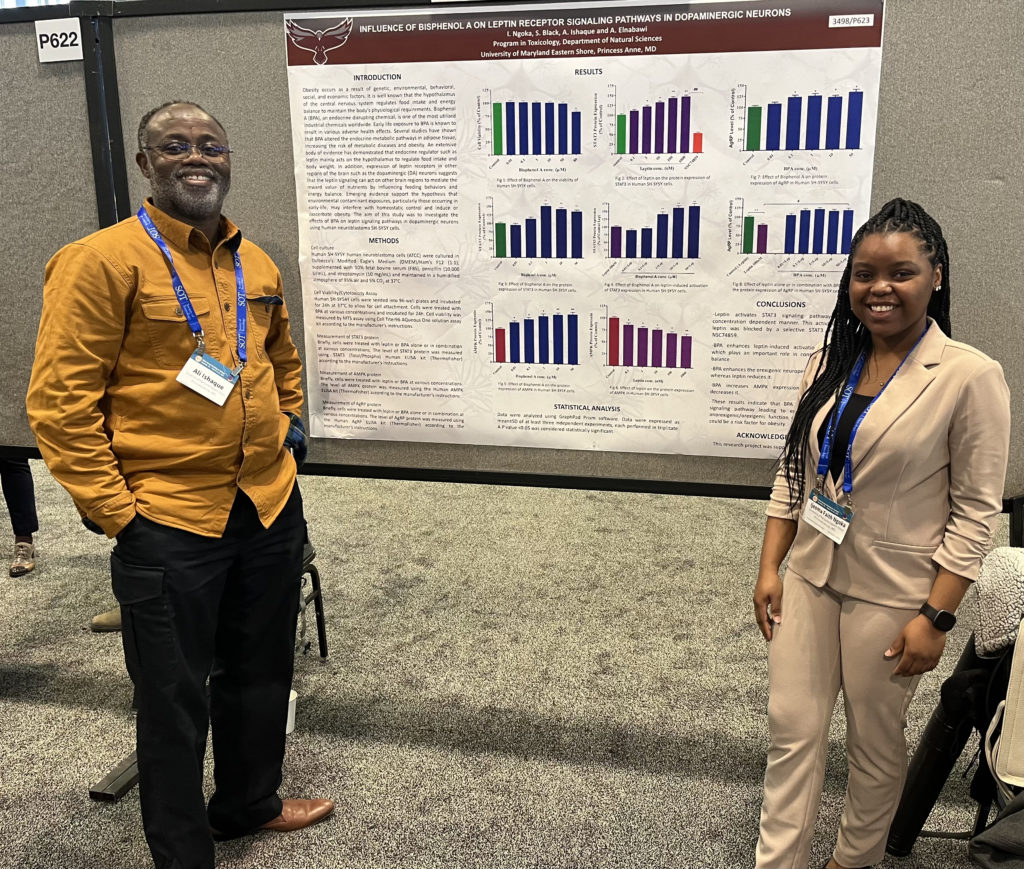
Graduate students in UMES’ Toxicology Program, Ijeoma Ngoka and Sherene Black, attended the 62nd annual Society of Toxicology Conference from March 19-23 in Nashville, Tennessee, to present their ongoing research. They were among 2,000 presenters and 5,000 attendees hailing from across the U.S. and countries such as Germany, Dubai, Sudan, Australia and Canada.
Ngoka presented research focused on identifying the mechanisms by which exposure to a chemical compound primarily used in the manufacturing of plastics, Bisphenol A, more commonly known as BPA, induces or exacerbates obesity.
“Along with the experience of presenting at the largest toxicology conference worldwide,” Ngoka said, “was the opportunity to network, and the connections to jobs and internships for both graduates and other students attending.”
Black’s research abstract details the “Nephrotoxicity of Glyphosate: Oxidative Stress and Mitochondrial Dysfunction in Human Renal Proximal Tubule Epithelial Cells.”
“I was thrilled at the overwhelming feedback I received from experts in the field and am ready to make the necessary adjustments when I get back to the lab,” Black said. “Being able to present at a conference of this magnitude has given me more confidence to preparation for my dissertation defense.”
Ngoka’s and Black’s abstracts were published in The Toxicologist: Supplement to Toxicological Science, the official journal of the Society of Toxicology, Vol 192.
An added perk of the conference was meeting UMES toxicology alumnae Drs. Kristin Noell (2018) and Azah Mohamad (2020). Noell is now a study director at LabCorp Drug Development: Contract Research Organization. She works with pharmaceutical (large and small molecule), crop protection and chemical companies running general toxicology studies in large and small animal models. Noel attributes her career success to various opportunities, like attending the SOT for three years while she was at UMES.

Mohamad is employed with the Food and Drug Administration, where she uses emerging toxicology models and non-animal models to understand the mechanism of action of toxic elements and compounds that can be used in regulatory risk assessment. She also collects and analyzes scientific data in concordance with the traditional animal to high thru-put screening tools to determine the priority for chemicals with little to no data.
Mohamad said she enjoyed reconnecting with colleagues and professors from her alma mater, and meeting new and young scientists who shared information about their work projects.
“SOT is one of the platforms where you can always create a magnificent network and gather information,” she said.
Once the academic work was behind them, it was time to unwind at the nearby Country Music Hall of Fame and Museum and the National Museum of African American Music and a couple restaurants to taste the region’s “famous” hot chicken before catching flights back to Princess Anne. The students were accompanied by UMES faculty members Drs. Ali Isahaque and Ahmed Elnabawi.
Gail Stephens, agricultural communications and media associate, University of Maryland Eastern Shore, School of Agricultural and Natural Sciences, 410-621-3850, gcstephens@umes.edu
Contributor, Sherene Black. Photos submitted.


